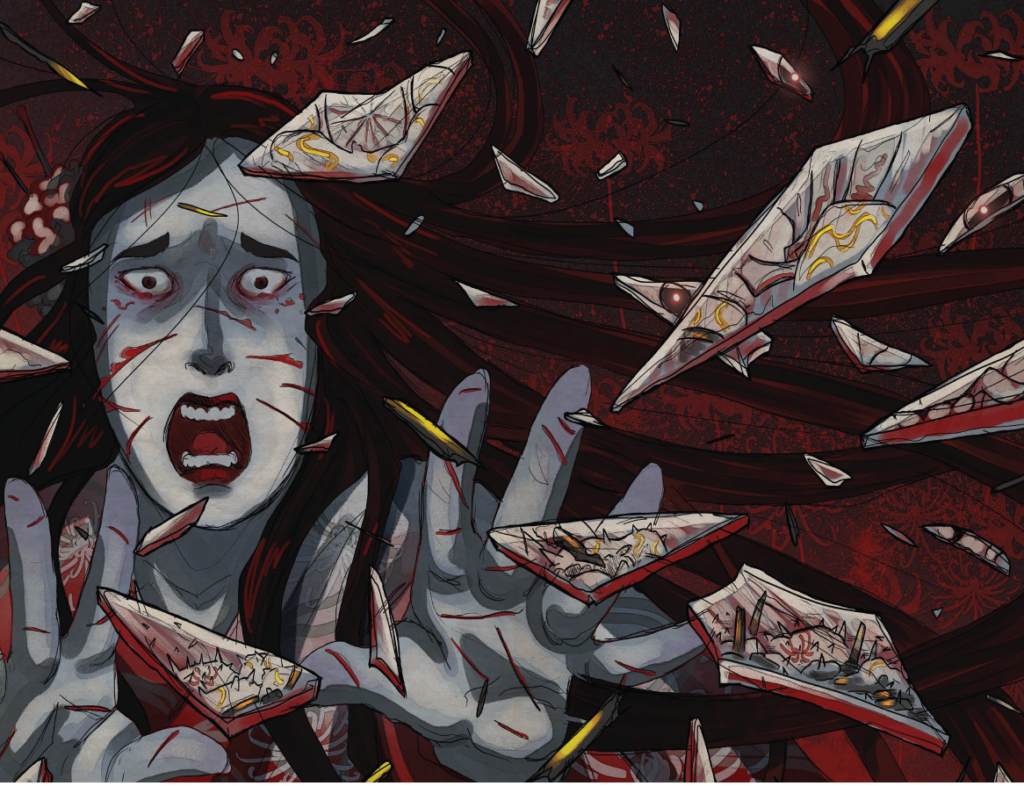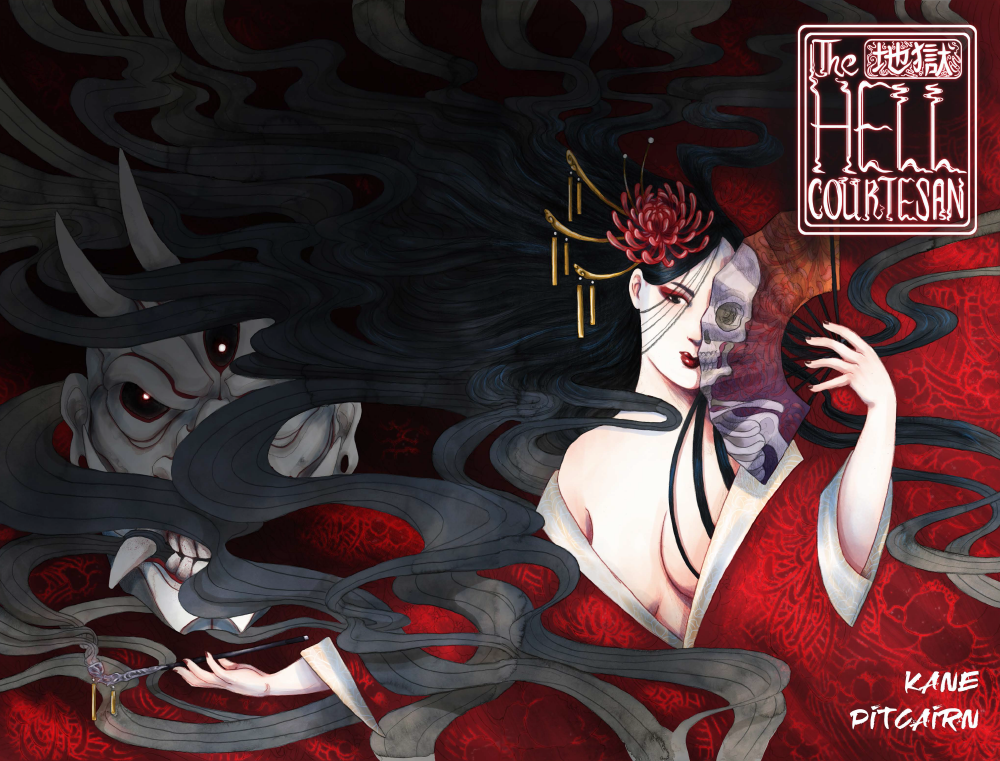Japanese history is one of the most interesting reads. Beyond stories about the samurai, the shoguns, and the royalty, among the most intriguing are stories of its historical entertainers sex workers. Their life is not only one of misery but also one of luxury.
Hell Courtesan is one of those legendary stories that you rarely find. It’s a definitive title for N.S. Kane and Chris Pitcairn and should be listed as one of their masterworks. Not only is the story almost period accurate, it is also one heck of an entertaining tale worthy of perfection.
The Story and Writing of Hell Courtesan: Jigoku Dayu
Hell Courtesan is an Australian graphic novel self-published by N.S. Kane. The story is written, lettered and created by N.S. Kane, with pencils and colours by Chris Pitcairn.
The story follows Jigoku, a high-class courtesan who created a pact with the devil. She is known for her alabaster skin and renowned beauty, but she also hides a secret from the people around her.
Hell Courtesan is one heck of a story that deserves the highest praises. The story is among the best fictional historical comic books I’ve read. As a self-educated Japanese history nut, it checks all the marks for complexity, entertainment, and authenticity.

To understand why I’m gushing, we need to add context to the story. This puts us around the Meiji era in Japan, somewhere between 1868 to 1912. During the time, red light districts were some of the most profitable means of living for the average people.
An artist named Kawanabe Kyosai became well known for his prints. Among his most beloved pieces of art is the Jigoku dayu, which translates into “hell courtesan.” The story of jigoku tayu goes back to the ukiyo-e artist Utagawa Kuniyoshi and the historical stories about yokai.
It seems N.S. Kane got her inspiration from this story, adding her own twists to its lore. Even then, she still told a compelling story that gives justice to this folklore. What I loved about it is the rich characterisation she gave her protagonist, Jigoku.
The woman is no saint. She is a courtesan, which is the historical equivalent of a sex worker or high-class escort, giving us a chance to tackle a myth that we need to clarify first.
Unlike the courtesan, the renowned geisha were neither prostitutes or sex workers. They came from the courtesan class of people, but never engaged in lascivious acts. The courtesans, however, were different.
The courtesans, depending on their ranks, controlled their trade. The highest rank among them, the tayū, had the choice if they wanted to engage with customers. They generally did not, but Jigoku did so and she is not evil because she engages in it, but rather how broken she is.
With all the bad things she does, she is, by all means, a perfectly broken character. She is a bird in a gilded cage, and she doesn’t even know it. Jigoku will do everything in her power to stay relevant.
In all its twisted ways, Jigoku represents the type of strong woman that would have lived in this era. N.S. Kane has a way of writing complex female leads, but all of them are strong and independent. Jigoku is as period accurate as she can be - ruthless, monstrous, beautiful.
The Art of Hell Courtesan: Modernised Ukiyo-e By A Master Artist

The art of Hell Courtesan is a thing of wonder. It is beautiful and unrivalled and, in my opinion, Chris Pitcairn’s best work I’ve seen so far. The art is worthy of Kawanabe Kyosai and feels like a modernisation of the traditional ukiyo-e style.
Ukiyo-e, which is a traditional style of printing, uses woodblock stamps on mulberry paper. The style, if you check online, is one of its kind. Chris has not only emulated the style but modernised it to fit the story.
The style is beautiful and has great use of colours. Chris also added important symbolisms to the story that makes the story more authentic. Among a few of them are the red spider lilies on Jigoku’s kimono, which symbolise her connections with death and samsara.
There’s also the images of the Shinto gods, specifically Amaterasu, who symbolise fertility and enlightenment. All these, combined with the beautiful storytelling of N.S. Kane, create a jawdropping folktale.
Should You Read Hell Courtesan?
Should you read Hell Courtesan? Yes, read it and read it again. Pick it apart and find the symbolisms and the message in it. It’s an unbelievable story and a great pickup for anyone.
Rating: 5/5
« PREVIOUS NEXT »

